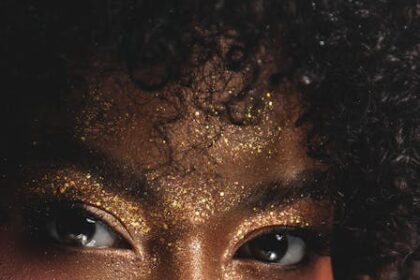Creative Best Practices for Instagram Ads
Successful Instagram advertising transcends mere visibility; it hinges on the creation of ad experiences that resonate deeply, stopping the scroll and compelling action within a highly visual and dynamic environment. The platform, fundamentally built around visual storytelling and community engagement, demands an acute understanding of its users’ consumption habits and algorithmic preferences. At its core, Instagram ad creativity must be mobile-first, brief, impactful, and authentic, blending seamlessly into the user’s feed while simultaneously delivering a clear marketing message. The constant evolution of Instagram’s features—from Stories and Reels to Shopping and Explore—mandates a flexible and format-specific approach to creative development, ensuring that each ad is not just seen, but felt and remembered. Understanding the nuances of visual composition, compelling narrative, succinct copy, and the strategic deployment of interactive elements is paramount for advertisers aiming to convert passive viewers into engaged customers. The ephemeral nature of some content, coupled with the immediacy of others, means that ads must capture attention instantaneously, delivering value or intrigue within the first few seconds. This requires a strategic blend of aesthetic appeal, emotional intelligence, and data-driven insights to continually refine and optimize creative assets for maximum impact and return on investment.
Core Principles of Effective Instagram Ad Creatives
The foundation of any high-performing Instagram ad lies in several immutable principles that govern user engagement on the platform. First and foremost is thumb-stopping power. In a feed inundated with content, an ad must instantly grab attention. This is achieved through striking visuals, unexpected elements, vibrant colors, intriguing questions, or compelling motion. The goal is to interrupt the mindless scroll, forcing the user to pause and engage. This initial disruption must then be followed by brand identity and consistency. Every creative asset, from imagery and typography to color palette and tone of voice, should be unmistakably aligned with the brand’s overall aesthetic and messaging. Consistency builds recognition, trust, and reinforces brand recall across multiple touchpoints. Disjointed creative can confuse users and dilute brand perception.
Clarity and simplicity are non-negotiable. While Instagram offers a canvas for creativity, clutter is the enemy of effectiveness. Ads should convey their core message quickly and unambiguously. Overly complex visuals, dense text, or convoluted offers will lead to immediate disengagement. The ideal Instagram ad communicates its value proposition with elegant conciseness. This ties directly into the value proposition, which must be immediately apparent. Users need to understand what problem the product or service solves, what benefit it offers, or what unique experience it provides, all within a glance. This benefit-driven approach, rather than merely listing features, resonates far more deeply with potential customers.
Authenticity and relatability are powerful drivers on Instagram, a platform where users connect with real people and genuine experiences. Leveraging user-generated content (UGC), behind-the-scenes glimpses, or relatable scenarios can foster a sense of trust and connection that polished, overtly commercial creatives often struggle to achieve. Users are savvy and can discern genuine content from highly produced ads, often preferring the former. This authenticity extends to the call to action (CTA), which must be prominent, clear, and compelling. Whether it’s “Shop Now,” “Learn More,” or “Sign Up,” the CTA should be unambiguous about the desired next step and ideally create a sense of urgency or exclusivity where appropriate.
Given Instagram’s mobile-first nature, mobile optimization is critical. Creatives must be designed specifically for vertical viewing, with appropriate aspect ratios (e.g., 9:16 for Stories, 4:5 for Feed). Text must be legible on small screens, and visuals should load quickly. Any creative not optimized for mobile will result in a poor user experience and diminished performance. Finally, sound on/off strategy acknowledges that a significant portion of Instagram users browse with sound off. This necessitates visual storytelling through text overlays, captions, and compelling imagery that can convey the message independently of audio. For those who do have sound on, captivating audio—be it music, voiceovers, or sound effects—can significantly enhance the ad experience, making it crucial to design for both scenarios. Each of these principles, when meticulously applied, contributes to an ad that not only captures attention but also drives meaningful engagement and measurable results.
Deep Dive into Visual Elements for Instagram Ads
Visuals are the cornerstone of Instagram advertising, demanding meticulous attention to detail and a strategic approach to design. Photography must be of the highest quality, characterized by crisp focus, balanced lighting, and thoughtful composition. High-resolution images are non-negotiable, avoiding pixelation that can undermine professionalism. Composition principles like the rule of thirds, leading lines, and negative space can significantly enhance visual appeal, guiding the viewer’s eye to the key elements of the ad. Subject matter should be aspirational, authentic, and relevant to the target audience, showcasing the product or service in a context that resonates. For fashion, this might mean lifestyle shots; for food, delectable close-ups.
Videography offers a dynamic medium for storytelling and demonstrating product benefits. The optimal length for Instagram video ads often falls within the 6-15 second range, ensuring maximum impact before attention wanes. The hook is paramount, needing to appear within the first 3 seconds to prevent immediate scrolling. This can be achieved through rapid cuts, surprising visuals, intriguing questions, or immediate display of the product in action. Dynamic editing with quick transitions, varied shot types, and a compelling pace keeps viewers engaged. Music and audio selection are crucial for elevating the emotional impact and reinforcing brand identity, but as noted, text overlays are essential for conveying the core message when sound is off. For Reels-specific best practices, advertisers should embrace trending audio, fast-paced editing, and short, entertaining formats that mimic organic user content. Think quick tutorials, challenges, or before-and-after transformations.
Graphics and illustrations provide a versatile alternative or complement to photography and videography. They allow for abstract concepts, data visualization, or the creation of unique brand aesthetics that photography might not capture. Animated graphics can add an engaging element without the complexity of full video production. Color psychology plays a significant role, as colors evoke emotions and associations. Brands should leverage their established color palettes strategically, using colors that align with their message and desired emotional response (e.g., blue for trust, red for urgency). Typography must be legible, especially on mobile screens, and consistent with brand guidelines. The chosen fonts communicate personality—modern, classic, playful, or serious—and should enhance, not detract from, the overall visual message.
Layout and composition guide the viewer’s eye and establish visual hierarchy. Principles like the rule of thirds can create balanced and aesthetically pleasing visuals. Effective use of negative space can highlight the subject and prevent visual clutter, making the ad feel sophisticated and easy to digest. Elements should be arranged to tell a clear story, leading the viewer naturally to the CTA. Finally, ensuring the correct image and video resolution and aspect ratios for each Instagram ad placement (Feed, Stories, Reels, Explore, Shop) is critical. High-quality visuals that fit the platform’s specifications prevent distortion, cropping, or pixelation, delivering a polished and professional impression that maximizes the impact of the ad creative.
Crafting Compelling Ad Copy for Instagram
While Instagram is predominantly visual, the ad copy plays a critical role in providing context, evoking emotion, and driving action. It’s the voice of your brand, supporting the visuals and guiding the user’s journey. The headline hook, though often integrated directly into the visual for immediate impact, sets the tone and grabs initial attention. It should be concise, benefit-oriented, or provoke curiosity, enticing the user to read further. Examples include: “Unlock Radiant Skin,” “Stop Wasting Time,” or “The Secret to Effortless Travel.”
The body copy then elaborates on the hook, weaving a narrative that resonates with the target audience. A highly effective framework is the problem-solution approach: identify a pain point your audience experiences, then present your product or service as the ultimate solution. This approach immediately makes the ad relevant. Benefit-driven language is paramount; instead of listing features, explain how those features improve the user’s life or solve their problems. For instance, instead of “Our blender has 1000 watts,” say “Achieve silky-smooth smoothies in seconds.”
Storytelling can create a powerful emotional connection. Share a brief narrative about a customer’s transformation, the brand’s origin, or the journey of a product. Stories are inherently engaging and more memorable than dry facts. Incorporating scarcity or urgency (e.g., “Limited stock,” “Offer ends soon,” “Flash sale for 24 hours”) can motivate immediate action by creating a fear of missing out. Social proof, such as testimonials, customer reviews, or user statistics (e.g., “Loved by over 10,000 customers”), builds trust and credibility. People are more likely to try something if they see others have had positive experiences.
Emojis can add visual appeal, break up text, and convey tone or emotion concisely, making the copy more engaging and scannable. However, use them judiciously to maintain a professional brand image. Hashtag strategy is crucial for discoverability and expanding reach. Research relevant, trending, and niche-specific hashtags. A mix of broad and specific hashtags can optimize visibility. Don’t overdo it; a few highly relevant hashtags are often more effective than a long list of generic ones. Use brand-specific hashtags for tracking and community building.
The Call to Action (CTA) copy is the final directive, prompting the user to take the desired next step. It should use strong, active verbs (e.g., “Shop Now,” “Download,” “Learn More,” “Sign Up,” “Book Your Spot”). It must be crystal clear about what happens after clicking. Phrases like “Discover Your Perfect Match” or “Get Your Free Guide” are more enticing than generic “Click Here.” Finally, A/B testing copy variations is essential. Experiment with different headlines, opening lines, benefit statements, CTAs, and even emoji usage to understand what resonates best with your audience and drives the highest conversion rates. Continuous testing and refinement based on performance data are key to optimizing copy for maximum effectiveness.
Leveraging Different Instagram Ad Formats
Instagram offers a diverse suite of ad formats, each with unique characteristics and optimal use cases for creative deployment. Understanding these nuances is crucial for maximizing ad performance and ensuring the creative aligns with the platform’s native experience.
Image Ads, typically single image or carousel, are the most straightforward format. A single image ad is ideal for strong, singular product shots, brand awareness campaigns focused on a specific aesthetic, or straightforward announcements. The key is a high-quality, attention-grabbing visual paired with concise, compelling copy and a clear CTA. Carousel ads (multiple images or videos in a single ad) are excellent for showcasing different product variations, highlighting multiple features, telling a sequential story, or presenting a step-by-step guide. Creatively, each card in the carousel should contribute to the overall narrative, with the first card acting as the hook. They allow for deeper engagement than a single image, as users swipe through the content.
Video Ads (single video or carousel) offer unparalleled opportunities for dynamic storytelling and demonstrating product utility. A single video ad is powerful for capturing attention, conveying emotion, and explaining complex concepts quickly. They are highly effective for product demonstrations, brand storytelling, or showcasing lifestyle. Video carousel ads extend this, allowing for a multi-chapter narrative or showcasing several products in motion. Best uses include short tutorials, showcasing different uses of a product, or providing multiple angles. The challenge is maintaining engagement across multiple video segments.
Stories Ads are designed for full-screen, vertical immersion. Their ephemeral nature and common use of interactive elements make them unique. Creatively, Stories ads should feel native to the Stories experience: raw, authentic, and fast-paced. Vertical 9:16 aspect ratio is essential. They are ideal for quick product launches, flash sales, behind-the-scenes content, or direct response with a strong “Swipe Up” (or equivalent CTA) for immediate action. Interactive elements like polls and quizzes can significantly boost engagement, making the ad feel less like an interruption and more like an engaging piece of content.
Reels Ads tap into the entertainment-driven, short-form video trend. These ads appear between organic Reels and must be highly engaging within seconds. Creative best practices for Reels ads include embracing trending sounds, utilizing fast cuts, incorporating text overlays for sound-off viewing, and adopting a playful, often humorous, or highly informative tone. They are perfect for product reveals, quick tutorials, before-and-after transformations, or challenges. The key is to blend seamlessly with organic Reels content, often leveraging popular formats or challenges to capture attention.
Collection Ads provide a seamless shopping experience directly within Instagram. They feature a cover image or video followed by several product images that, when tapped, open a full-screen instant experience displaying multiple products. Creatively, the cover media should be enticing, and the subsequent product images should be high-quality and clearly shoppable. They are best for e-commerce brands looking to drive direct sales by showcasing a range of products within a specific category or collection, offering a frictionless path to purchase.
Explore Ads appear within the Instagram Explore tab, a hub for content discovery. Ads in Explore are shown to users already actively seeking new content, making them ideal for brand awareness and reaching new, interested audiences. Creatives for Explore ads should be visually captivating and broadly appealing, designed to capture the attention of users in a discovery mindset. They might feature a product in an aspirational context or present intriguing content that prompts further investigation, driving users to a profile or website.
Shop Ads are deeply integrated into Instagram’s Shopping features, appearing within the dedicated Shop tab. These ads are highly product-centric, designed to connect users directly with products they can purchase. Creatively, they should feature clear, high-quality product imagery or video, with direct links to product pages. They are perfectly suited for e-commerce brands aiming to capitalize on intent-driven shopping behavior, providing a direct pathway from discovery to purchase.
Finally, Branded Content Ads leverage influencer marketing by allowing businesses to promote content created by creators as an ad. This format is incredibly effective for authenticity and trust-building. Creatives here should feel organic and genuine, retaining the influencer’s unique voice and style. Best practices include collaborating with influencers whose audience aligns with your target market, ensuring their content genuinely promotes your product, and clearly disclosing the partnership to maintain transparency and credibility. This format bridges the gap between traditional advertising and authentic user recommendations, often leading to higher engagement and conversion rates due to built-in social proof.
Advanced Creative Strategies & Techniques
Beyond the foundational principles, advanced creative strategies can elevate Instagram ad campaigns from effective to exceptional, fostering deeper connections and driving superior results. User-Generated Content (UGC) stands as one of the most powerful tools. UGC, featuring real customers using or endorsing a product, offers unparalleled authenticity and social proof. It bypasses the inherent skepticism associated with traditional advertising, as it comes from a peer. To leverage UGC effectively, actively encourage customers to share their experiences through contests, dedicated hashtags, or by reaching out for permission to use their content. Visually, UGC often feels raw and relatable, allowing potential customers to envision themselves using the product. It builds trust and significantly boosts conversion rates.
Embracing Behind-the-Scenes (BTS) or Authenticity can humanize your brand. Showing the process of creation, the people behind the product, or candid moments from your team creates transparency and fosters a deeper emotional connection with the audience. This strategy helps differentiate your brand in a crowded marketplace, showing vulnerability and genuine passion rather than just a polished facade. It’s particularly effective in Stories and Reels, where a less polished aesthetic is often preferred.
Interactive Elements within ads can transform passive viewing into active participation. Beyond basic swipe-ups, features like polls, quizzes, and even augmented reality (AR) filters for products (where applicable) can significantly boost engagement. For instance, a poll asking “Which color would you choose?” or a quiz matching users to a product based on their preferences makes the ad experience personalized and fun. Leveraging Instagram DMs for automated conversations or customer service can also add an interactive layer, guiding users through a buying journey or answering common questions in real-time.
Personalization and Segmentation through dynamic creative optimization (DCO) allow for tailored ad experiences. Instead of a one-size-fits-all approach, DCO enables advertisers to automatically generate multiple variations of an ad (different images, headlines, CTAs) and serve the most relevant version to specific audience segments based on their demographics, interests, or past behavior. This hyper-targeted approach makes the ad feel directly relevant to the individual, dramatically increasing resonance and conversion potential.
Developing Storytelling Arcs across a series of ads can build anticipation and emotional investment. Instead of single, disconnected ads, create a sequence that unfolds a narrative over time, perhaps introducing a problem in one ad, a solution in another, and a transformation in a third. This sustained narrative can foster stronger brand loyalty and a deeper understanding of your offerings.
Trendjacking and Cultural Relevance involve tapping into current events, viral challenges, or popular memes to make ads timely and relatable. This requires a rapid response time and a keen understanding of online culture. While it can lead to massive viral success, it also carries risks; content must be executed tastefully and genuinely, avoiding forced or disrespectful appropriations. The goal is to integrate the brand organically into ongoing conversations without appearing opportunistic or out of touch.
Seasonal and Event-Based Campaigns capitalize on holidays, cultural events, or peak shopping seasons. Creatives should be visually aligned with the theme, incorporating festive elements or specific messaging that ties into the event (e.g., Valentine’s Day gifts, back-to-school essentials, Black Friday deals). Planning these campaigns well in advance ensures timely execution and effective creative development.
Finally, consider Retargeting Creatives specifically for warm audiences. Users who have previously interacted with your brand (visited your website, engaged with past ads, added to cart) should see different creatives than cold audiences. These creatives can be more direct, offer special incentives (e.g., a discount code), or address specific abandonment issues (e.g., “Still thinking about it?”). The creative for retargeting should acknowledge their prior interaction, creating a sense of personalized follow-up.
Distinguishing between Direct Response vs. Brand Awareness Creatives is also paramount. Brand awareness creatives might focus on emotional connection, storytelling, and broad appeal to build recognition, often using aspirational imagery or cinematic video. Direct response creatives, conversely, are optimized for immediate action, featuring clear product benefits, strong CTAs, and often urgency. Understanding the campaign objective dictates the creative approach, ensuring that every visual and copy element is geared towards achieving the desired outcome, whether that’s top-of-funnel reach or bottom-of-funnel conversion.
Testing, Iteration, and Optimization for Instagram Ads
The realm of Instagram ad creativity is not static; it’s a dynamic ecosystem that demands continuous experimentation and refinement. A/B testing creatives is fundamental to understanding what resonates most effectively with your target audience. This involves systematically changing one variable at a time between two versions of an ad (A and B) to determine which performs better. Variables to test include:
- Visuals: Different images (product shots vs. lifestyle), video lengths, video intros (hooks), color schemes, models, and overall aesthetic.
- Copy: Headline variations, different opening lines, long-form vs. short-form text, benefit-driven vs. feature-driven language, tone of voice (humorous vs. serious), and different emojis.
- Calls to Action (CTAs): Different phrasing (“Shop Now” vs. “Learn More”), button colors, and placement.
- Formats: Testing the same message across an image ad, a video ad, a Story ad, or a Reel ad to see which format yields the best results for a specific objective.
- Audience Segmentation: Testing different creative approaches for different audience segments, even if the core message is the same, to see which visual or narrative style resonates most with specific demographics or interest groups.
To effectively evaluate these tests, advertisers must meticulously track Key Performance Indicators (KPIs) for creative evaluation. For brand awareness, focus on Reach, Impressions, and Brand Recall Lift. For engagement, monitor Engagement Rate (likes, comments, saves, shares), Video View Rate, and specific interaction metrics for Stories (poll responses, quiz completions). For direct response campaigns, critical KPIs include Click-Through Rate (CTR), Cost Per Click (CPC), Cost Per Result (e.g., Cost Per Lead, Cost Per Purchase), Conversion Rate, and Return on Ad Spend (ROAS). These metrics provide tangible evidence of creative effectiveness and directly inform optimization decisions.
Analyzing Ad Reports within Facebook Ads Manager is where insights are extracted. Dive deep into the performance breakdown by creative asset. Look for patterns:
- Which specific visuals have the highest CTR?
- Which copy variations lead to the lowest CPC?
- At what point in the video do viewers drop off?
- Do specific demographic groups respond better to certain creative elements?
- Is creative fatigue setting in for particular ads?
Identify top-performing and under-performing creatives. Don’t just look at the overall campaign performance; segment by ad creative to pinpoint specific strengths and weaknesses.
The process is inherently iterative: Learn, refine, re-test. Once you identify a winning creative, scale its budget. But simultaneously, use the learnings from its success to inform new creative variations. Never stop testing. Even the best-performing creative will eventually experience creative fatigue, where performance declines because the audience has seen the ad too many times. Recognizing the onset of creative fatigue (e.g., declining CTR, increasing CPC, lower engagement) is crucial. Combat it by constantly refreshing your creative assets. This means developing a diverse library of images, videos, and copy variations. Implement a creative refresh schedule, typically every 2-4 weeks for evergreen campaigns, and more frequently for high-volume campaigns. Variety is key; show your audience something new and unexpected.
Finally, competitor analysis can provide valuable insights for creative inspiration and differentiation. Observe what types of creatives your competitors are running, which ones seem to be performing well (based on their duration in market or public engagement), and identify any gaps or unique angles you can exploit. Don’t copy, but learn from their successes and failures. This external perspective, combined with internal data-driven insights and a commitment to continuous testing, forms a robust framework for optimizing Instagram ad creatives and ensuring sustained campaign success in an ever-evolving digital landscape.
Technical & Compliance Considerations for Instagram Ads
Beyond artistic merit and strategic intent, Instagram ad creatives must adhere to a strict set of technical specifications and compliance guidelines. Neglecting these can lead to ad rejection, suboptimal performance, or even account suspension. Understanding and implementing these considerations from the outset is crucial for a smooth and effective ad campaign.
Ad Specifications are paramount. Instagram, as part of the Meta ecosystem, has precise requirements for image and video aspect ratios, file types, and size limits, which vary slightly depending on the placement (Feed, Stories, Reels, Explore, Shop).
- Feed (Image/Video): Recommended aspect ratio 4:5 (portrait), 1:1 (square), or 1.91:1 (landscape). Max resolution for square is 1080x1080px. For video, max file size 4GB, max length 60 seconds (though shorter is generally better for engagement).
- Stories/Reels (Video/Image): Must be 9:16 (full-screen vertical). Recommended resolution 1080x1920px. Video length up to 60 seconds for Stories (though 15s per frame), Reels can be up to 90 seconds. Audio must be clear.
- Carousel Ads: Can use 1:1, 4:5, or 1.91:1 aspect ratios depending on placement.
- Collection Ads: Cover image/video can be 1.91:1, 1:1, or 4:5. Product images must be 1:1.
Ad creatives that do not meet these specifications may be automatically cropped, stretched, or displayed incorrectly, ruining the intended visual impact and professional appearance. Always check Meta’s official advertising guide for the most up-to-date specifications.
While the strict “text in image rule” (limiting text to 20% of the image area) has been relaxed, it still serves as a valuable guideline. Ads with excessive text overlays tend to perform worse because they look cluttered and less native to the highly visual Instagram environment. Prioritize compelling visuals, and use copy for details in the ad’s caption. If text overlays are essential, ensure they are concise, legible, and strategically placed.
Brand Safety and Community Guidelines are non-negotiable. Instagram has strict policies against certain types of content. This includes, but is not limited to, hate speech, violence, nudity, sexually suggestive content, false information, misleading claims, and the promotion of illegal products or services (e.g., illicit drugs, unsafe supplements, weapons). Ads must be truthful, non-discriminatory, and avoid any content that could be considered offensive or harmful. Advertisers must also comply with local advertising laws and regulations, particularly concerning specific industries like alcohol, gambling, or pharmaceuticals, which often have additional restrictions on targeting and content. Regularly reviewing Meta’s advertising policies is crucial to avoid ad disapprovals and account flags.
For Disclosures for Branded Content, transparency is key. When running ads that feature creators or influencers, it is mandatory to use the “Paid partnership with” tag. This clearly informs users that the content is a sponsored collaboration, maintaining trust and adhering to regulatory requirements (e.g., FTC guidelines in the US). Failure to disclose branded content properly can lead to fines and damage to brand reputation. The creative itself should feel organic and genuine, but the disclosure mechanism is non-negotiable.
Finally, Accessibility is an increasingly important consideration for inclusive advertising. For video ads, providing accurate captions is essential. Not only does this ensure your message is conveyed when users watch with sound off, but it also makes your content accessible to hearing-impaired individuals. For image ads, providing descriptive alt text (alternative text) allows screen readers to describe the visual content to visually impaired users. Designing creatives with sufficient color contrast for readability and avoiding flashing lights or patterns that could trigger seizures are also critical for broad accessibility. Adhering to these technical and compliance standards not only ensures your ads run smoothly but also fosters trust with your audience and builds a responsible and professional brand image.










